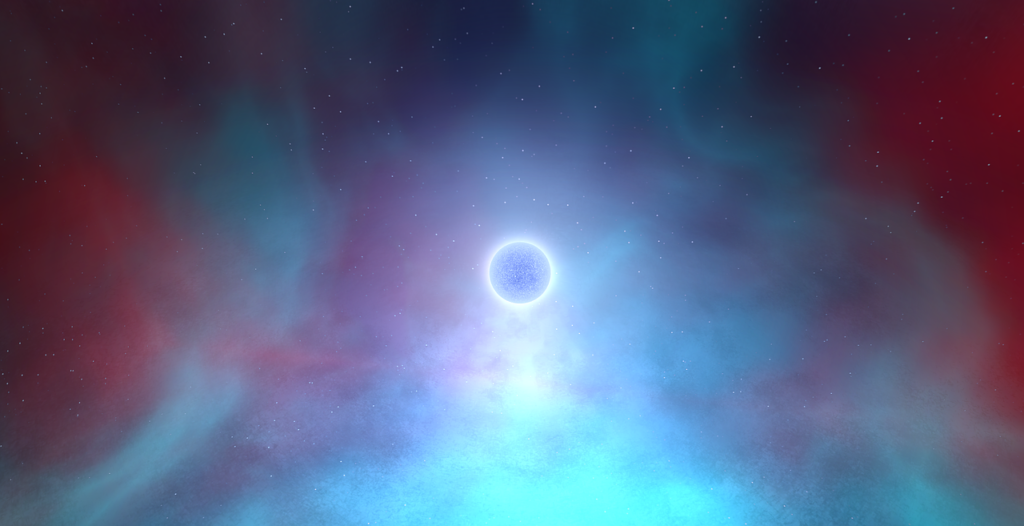How are planets made?
by Scott Dutfield · 27/06/2020

Discover how the dust and gas swirling around a newly formed star coalesces into a planetary system
Planet formation is a spinoff – literally – of star formation. Stars are born in interstellar space, which for the most part is filled with extremely tenuous gas and dust. But some regions of the interstellar medium, called molecular clouds, are much denser than their surroundings. It’s here that star formation takes place. The cloud’s gravity is strong enough to make it collapse down in size, from several light years across to something like the present size of the Solar System. By contracting so much, the material in the cloud starts to spin more rapidly – as ice skaters do when they pull their arms in. While most of the mass in the cloud collapses down to the central star, the excess spin creates a wide disc of material orbiting the newly formed star. It’s from this ‘protoplanetary disc’ that planets will form.
Although the basic mechanism of star formation has been known for a long time, our understanding of planet formation is much more recent. The conventional wisdom now is that the vast majority of stars are formed with planetary systems around them, but until the present century this was a highly speculative view. Very few ‘exoplanets’ – planets around other stars – were known, and no one had ever seen a protoplanetary disc. Since then, Kepler and other telescopes have discovered thousands of exoplanetary systems, while the ALMA radio telescope has imaged dozens of protoplanetary discs. One such disc, around the star PDS 70, even has a clearly visible planet forming inside it. Observations such as these, taken together with sophisticated computer simulations, have given us a much clearer picture of just how planets form.
The ‘dust’ in the protoplanetary disc starts out as microscopically small, solid particles. Close to the central star, these are mainly rocky or metallic in composition, switching to frozen hydrogen compounds – such as water ice, methane or ammonia – at larger distances. In both the ‘rocky’ and ‘icy’ regimes, events unfold in a similar way. As the dust particles travel around the star, all in slightly different orbits, they repeatedly collide with each other. These are relatively slow collisions, and the particles end up sticking to each other. This process – known as accretion – continues up the size scale until the particles become sizeable rocks, or ‘planetesimals’.
What happens in a low-speed collision between two planetesimals? The result isn’t a huge smash-up, but a gentle merger of the two objects – as you can see by looking at Ultima Thule, the snowman-shaped object that NASA’s New Horizons spacecraft photographed in January 2019. It’s just another step in the planet-building process. In the case of Ultima Thule, which is on the fringes of the Solar System, there wasn’t enough additional material to make a planet – but it’s a very different case in the crowded inner parts of the protoplanetary disc. Here, an object can accrete enough mass for gravity to pull it into a roughly spherical shape, at which point it really starts to look like a planet.
There’s another thing that needs explaining. The largest planets – like Jupiter and Saturn – have dense cores surrounded by huge envelopes of gas. How were they formed? The most probable scenario is that the cores were created by accretion, like a rocky planet, and their gravity then pulled in the envelope of gas. Alternatively, gravitational instabilities in the protoplanetary disc may have caused the gas to clump first, and it was the gravity of these clumps that pulled in dust and ice to form the planet’s core.
This article was originally published in How It Works issue 131, written by Drew May
For more science and technology articles, pick up the latest copy of How It Works from all good retailers or from our website now. If you have a tablet or smartphone, you can also download the digital version onto your iOS or Android device. To make sure you never miss an issue of How It Works magazine, subscribe today!




